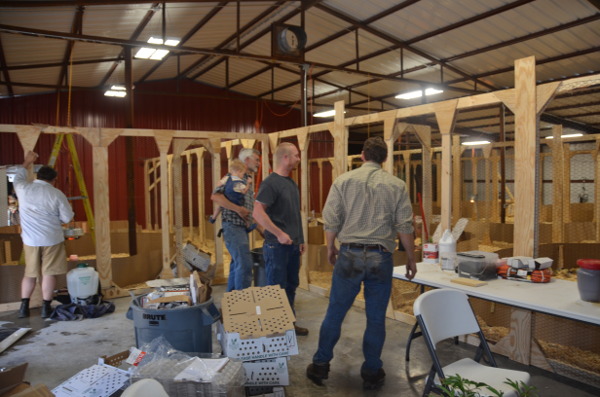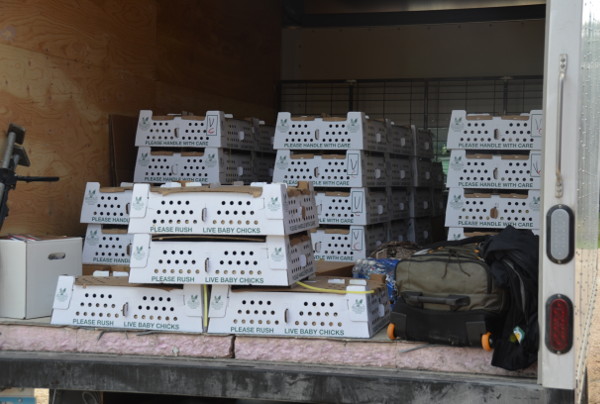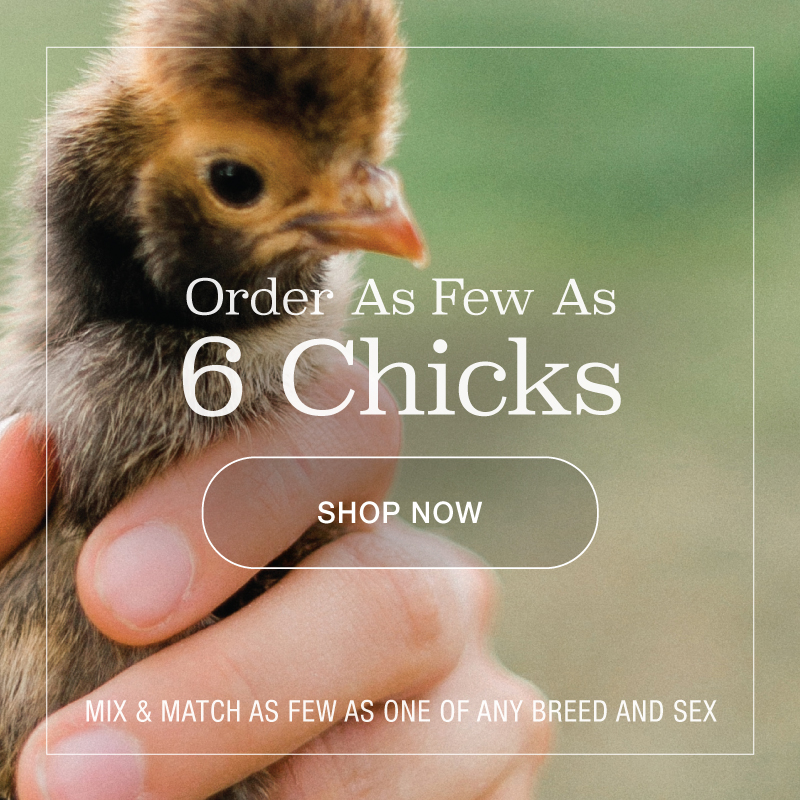 Background: Joe Claborn has worked with McMurray Hatchery for many years and currently raises started chicks and started pullets for McMurray. Joe is also involved with a project that Bud Wood, president of McMurray Hatchery, initiated to start backup flocks for many of McMurray’s rare breeds during the current Avian Flu outbreak.
Background: Joe Claborn has worked with McMurray Hatchery for many years and currently raises started chicks and started pullets for McMurray. Joe is also involved with a project that Bud Wood, president of McMurray Hatchery, initiated to start backup flocks for many of McMurray’s rare breeds during the current Avian Flu outbreak.
This is part 1 of a three-part interview. We plan to publish part 2 and 3 of the interview in the next few weeks.
Interviewer: What kind of preparations did you make to receive the chicks that Bud brought down from Iowa?
Joe Claborn: When the bird flu first started, I didn’t think it was going to have such a big impact on our lives. Bud and I discussed the possibility of moving some birds to Texas. We bought a 40 x 100 foot hoop house at an auction in Canada with the thought that when it got here, we would put it up for housing. At that point we were thinking to bring down adult birds from Iowa. Then we found out there was a possibility that we wouldn’t be able to move adult birds out of the quarantined zone, but that we would still be able to move baby chicks. The hoop house did not arrive when we expected it to, so we started to look for a place to brood 3,700 baby chicks.
Our barn burnt last fall from a fire in our shipping container room. We planned to restore and expand it and began work but hadn’t yet completed the addition. After looking around for suitable space, we decided to finish the barn’s addition and repairs — this would give us about 3,500 square feet.

Riley, Brian and Shannon building partitions in the barn
My oldest son, Brian, headed up the project. He pulled in his younger brothers and many of his friends. First, we cleaned out the remains of the old shipping room and the old brooder room. Then we put up new walls, a roof and an interior wall. Next came electrical. We decided to go with 4 bulb hanging brooders — one brooder light for each pen. The pens were each fifteen feet in diameter. We separated the room into four alleys with panels made from vinyl-coated chicken wire on 2×4 wood frames. Three of the alleys could hold three chicken pens and the fourth held two pens, for a total of eleven pens.

Surveying the pens and alleys
We were on a schedule, with about 10 days to go until the chicks would arrive, when in a Thursday phone call with Bud, we decided to move the chicks that Saturday. That gave us about 48 hours to complete what we thought we had 10 days for. There were a couple of pretty long nights with lots of snacks and milkshakes to fuel the effort.

Baby Chicks Transported to Texas Farm
Soon, we got a call from Bud that he was at the end of our road with a hatchery truck full of chicks. Out we went with the spray to disinfect the truck to make sure nothing came onto the farm from the outside. Bud had brought his son-in-law, Tom, to help with the driving and with the birds.

Bud Wood and his son-in-law, Tom preparing brooders
Once they arrived, we started introducing the chicks into the brooders. It takes a lot of help and time to put 3,700 chicks into the brooders. Each one has to be watered (dipping its beak in water so that it will recognize where to get water).

Giving the baby chicks their first drink
Within a few hours we had them all watered and fed.

Baby Chicks
That was 8 weeks ago. Maybe we can give an update later on the current status of the project.



Loved the interview and the sentiments expressed. I am glad that you are keeping breeding stock safe in multiple facilities; it is much easier to cross your fingers and hope for the best, but the approach you are taking is so much more responsible.
I also loved the family feel of Joe’s Texas farm: the pictures of his sons, the dog, the little girl. You hear so much about factory farming, and mechanized and industrialized animal husbandry that is good to be reminded that there are still people involved!
Too bad. I thought maybe you were going to sell chicks in Texas. I have bought all but one small group of chicks from MurrayMcMurray. All the MM chicks have arrived and thrived. Then one day I bought 4 chicks from a local feed store. 2 out of the 4 died. Never had such a problem before. Wish there was someone like MM here in Texas.
I Thank you for sending information to me On different things that are going on There. I ordered some Baby chicks from you all last Month and I want to thank you so much. They came in the mail safe and healthy. and I thank you again. I sell eggs and people come and asked me do you have any chickens to sell me I tell them no but you can buy them from Murry McMurry out of Iowa. Thanks again Ruby Norwood
I am sure there was a lot of hard work involved in moving and setting up that many chicks. Thank you for the information and really enjoyed your pictures.
Bless you all for your hard work and dedication to poultry. Your story should be shared with as many as possible. Thank you.
Thank you Joe
It’s fantastic to read your interview and see the proactive way you’ve responded to this problem. Thank you for taking care of your flocks and protecting these rare breeds from what could be a devastating situation. My best wishes for your Iowa flock. As an Iowan living down south, I have fond memories of your hatchery.
I enjoyed the photos along with the article. Please keep updates.
glad they made it safe. These diseases are awful. Expect lots of people diseases with this international food trade junk. Best wishes to a great company.
Great work and lovely pictures! Thank you for making sure our rare breeds continue to be safe.
Where in Texas is your backup brood farm? Here in west Texas where I am, there are
a lot of abandoned farms available for about $500/acre….and without crowding of neighbors….many of which are Mennonites now.
That’s one thing west Texas sorely needs….a big poultry farm producing fresh eggs and meat for the surrounding towns and cities.
Our backup facility is in Central Texas. This will only be a breeder farm where backup breeders will be held in case they are needed. We have no plans to move anymore of the operations to Texas. The hatchery will remain in Webster City Iowa where it has been since 1917.
awesome